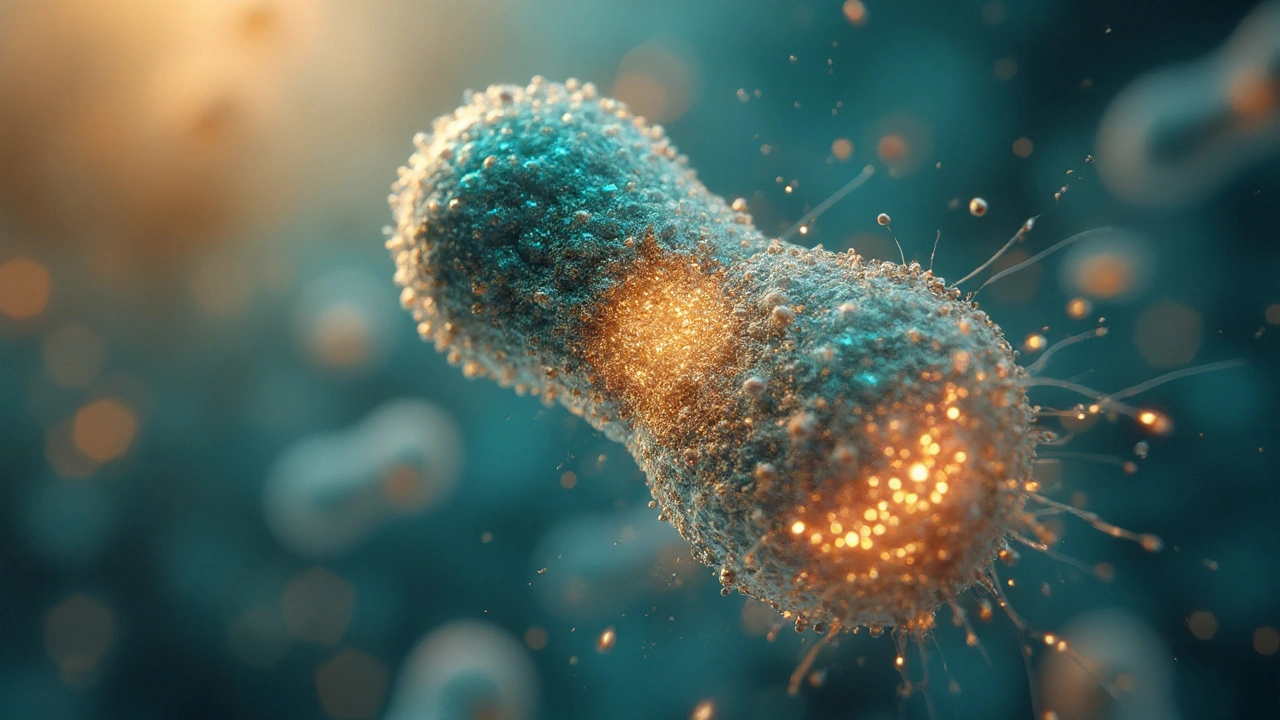
The Science Behind Cefixime: How It Battles Bacterial Infections
Explore how cefixime, a third‑generation oral cephalosporin, stops bacteria by disrupting cell‑wall synthesis, its spectrum, resistance issues and where it fits among antibiotics.
Ever wonder how penicillin actually kills bacteria? The secret lies in a group of enzymes called penicillin‑binding proteins, or PBPs. These guys are like construction workers that build and remodel the bacterial cell wall. When an antibiotic swoops in, it latches onto PBPs and stops them from finishing the wall, causing the bug to burst.
PBPs work on a sugary‑protein mesh called peptidoglycan. Think of peptidoglycan as a brick wall and PBPs as the mortar mixers. They link the sugar strands together and cross‑link the peptide bridges, giving the wall its strength. Without PBPs, the wall would be weak and the bacterium would leak out its insides.
There are several types of PBPs in each species, usually labeled PBP1, PBP2, etc. Some are “high‑molecular‑weight” and do most of the heavy lifting, while others are smaller and fine‑tune the wall’s shape. The mix varies from one bug to another, which is why some antibiotics hit certain bacteria better than others.
Penicillin and its cousins (cephalosporins, carbapenems, monobactams) are called β‑lactam antibiotics because they all share a four‑atom ring. That ring looks a lot like the natural building block PBPs love to bind. When a β‑lactam sneaks into the bacterial cell, it tricks the PBP into thinking it’s the right substrate and forms a permanent bond.
Once a PBP is stuck to a β‑lactam, it can’t do its job. The cell wall stops growing, and the bacterium becomes a balloon ready to pop. This is why β‑lactams are so effective against a wide range of infections.
But bacteria are clever. They can change the shape of their PBPs so the antibiotic no longer fits, or they can produce extra PBPs that the drug can’t reach. These tricks lead to antibiotic resistance, a big problem in hospitals worldwide.
Understanding PBPs helps doctors choose the right drug and scientists design newer antibiotics that can outsmart resistant bugs. For example, newer drugs attach to PBPs in a different way, making it harder for bacteria to mutate away.
So next time you hear about penicillin, remember it’s not magic—it’s a tiny battle between a drug and the penicillin‑binding proteins that keep bacteria standing. Knowing how that battle works gives you a clearer picture of why some infections get better quickly while others need stronger, newer medicines.

Explore how cefixime, a third‑generation oral cephalosporin, stops bacteria by disrupting cell‑wall synthesis, its spectrum, resistance issues and where it fits among antibiotics.